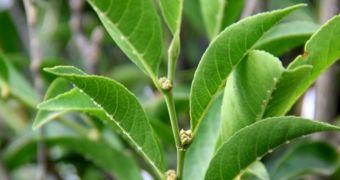A new paper in the journal PhytoKeys details the discovery of a new plant species that can be found in the Philippines and which displays some really weird dietary preferences.
Thus, specialists with the University of the Philippines, Los Baños, say that this plant, of whose existence the scientific community was previously unaware of, very much likes to eat metal.
Specifically, studies have shown that the plant, now referred to as Rinorea niccolifera, has a sweet tooth for nickel, and can feast on impressive amounts of this silvery-white lustrous metal without experiencing any side effects.
In their paper in the journal PhytoKeys, the researchers who discovered the new plant species detail that, according to their investigations, Rinorea niccolifera can accumulate up to 18,000 ppm of nickel in its leaves and not be affected by it.
Although other plant species have been shown to accumulate nickel in their leaves as well, the amount that they can tolerate is hundreds, sometimes even a thousand times lower that the one documented in the case of Rinorea niccolifera.
What's more, the University of the Philippines, Los Baños scientists say that, up until now, just 450 other plant species have been shown to display this ability to absorb loads of said metal and survive.
To help put things into perspective, it need be said that there are approximately 300,000 species of vascular plants in the world. This means that nickel hyperaccumulation occurs in just 0.5-1% of plants.
The specialists who found this new plant species in the western part of Luzon Island in the Philippines explain that it might one day be possible to use Rinorea niccolifera to fight environmental pollution and protect natural ecosystems.
The plant could be used to lower nickel concentrations in various regions across the world and reduce local levels of soil contamination. Besides, this newly discovered plant species could serve to recover metals that are commercially valuable from sites that would otherwise be difficult to exploit.
“Hyperacccumulator plants have great potentials for the development of green technologies, for example, phytoremediation and phytomining,” says Dr. Augustine Doronila of the School of Chemistry, University of Melbourne, a co-author of the report in the journal PhytoKeys.
For those unaware, phytoremediation refers to using certain plants to remove various contaminants from natural ecosystems. Phytomining, on the other hand, is the business of retrieving valuable metals with the help of plants that have evolved to absorb noteworthy amounts of them and store them in their leaves.

 14 DAY TRIAL //
14 DAY TRIAL //